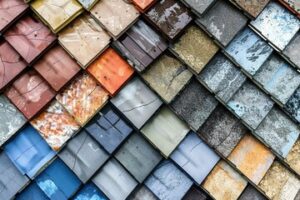3D Printing Phoenix AZ turns digital models into physical objects using a layer-by-layer printing process. The technology can shorten product development cycles and help identify design flaws before manufacturing them, reducing costly revisions and production delays.
Engineers start with a three-dimensional model created in CAD software to create a print. This is then turned into a file readable by the printer using print preparation software which sets the part orientation, size and print settings (e.g., slPrintingd support structures).

Product development is a process of trial and error that requires iteration to get right. 3D printing dramatically reduces this time, enabling designers to test and refine prototypes faster. The results are more realistic aPrintingelp to eliminate costly design revisions and usability issues before manufacturing begins.
With a range of 3D printing technologies available, manufacturers can choose the best technique based on the complexity of their product and material requirements. Each technique offers its own unique benefits and drawbacks, making it suitable for specific applications.
Compared to traditional prototyping methods, such as CNC machining or injection molding, 3D printing offers significant cost savings for low-volume production runs. By eliminating the need for costly tooling and reducing waste, this method of production can be much more affordable for small or medium-sized manufacturers.
The versatility of 3D printing also allows engineers to produce complex and intricate models with precision, ensuring that the final prototype will have both the desired look and function. Designed in CAD software like Stratasys GrabCAD,Printingrototypes can be built with the exact tolerances and support structures required for their end-use.
Proof-of-concept (POC) prototypes are often made without consideration for the aesthetics of a product and can benefit from the speed, low-cost, and Printingolution offered by many 3D printers. This allows designers to quickly test and validate key product assumptions in order to minimize risk.
Engineering or pre-production prototypes are the next stage in the product development process and require extensive functional and usability testing. Engineering plastics are ideal for these prototypes, as they can withstand thermal, chemical, and mechanical stresses that will be encountered during use.
Optimizing a design for 3D printing is simple, and can significantlyPrinting the efficiency of the manufacturing process. A few easy steps, such as avoiding unnecessary supports or designing parts with lattice structures, can help to save material and reduce print times. In addition, a range of materials is available to provide the strength and durability needed for these prototypes, without compromising on aesthetics. The ESP-Flasher project by Kaunas Makerspace is a great example of the time and cost savings that Printingchieved with rapid prototyping.
Reduced Manufacturing Costs
Compared to traditional manufacturing methods, 3D printing is more cost-effective. One major driver of this is the reduction of inventory costs. Manufacturers only print the parts they need, eliminating the overhead of maintaining and storing excess parts. This also allows for smaller batch sizes, which cuts down on production and shipping costs.
Using 3D printed prototypes during the product development process can also reduce manufacturing costs by allowing engineers to thoroughly test designs before moving into production. This minimizes the risks of design flaws that could lead to costly revisions and tooling changes later on. For example, the designers Printingo, an optically clear airlock for homebrewing, 3D printed 1,000 prototypes to refine their design before moving into production.
In addition, 3D printing can be used to create replacement parts for aging products. This can significantly cut down on maintenance and repair costs. A company can even replace existing metal parts with lighter, more durable composites, which can save on material and shipping costs.Printing way that 3D printing lowers costs is by replacing expensive jigs and fixtures. This can dramatically cut labor and set-up costs for manufacturing operations. For example, Pankl Racing Systems switched from machined jigs and fixtures to 3D printed parts, saving $150,000.
Additionally, a significant benefit of additive manufacturing is that it can produce parts made from a wide range of materials, from plastics to metals. This allows for the selection of the best material for each application, lowering the overall cost. For example, a part that requires a high level of strength may be more suitable for nylon than ABS or PLA.
The cost of 3D printing can also be driven down by selecting the right print process for each job. For example, Fused DepositiPrintinging is usually less expensive than Selective Laser Sintering or Stereolithography (SLA). By monitoring print conditions and choosing the right materials, manufacturers can make the most of this technology to lower costs.
More Customizable
With 3D printing, manufacturers can incorporate a multitude of features in the same piece of product, which allows for a lot more customization. This isPrintinglly useful for consumer-facing products. A great example is the fashion industry, where designers and consumers alike strive for more unique pieces that show their personality. 3D printing makes it possible to create one-of-a-kind clothing that would be extremely costly or even impossible to produce with traditional manufacturing techniques.
With the ability to add complex shapes and internal lattices, 3D printing allows for design freedom that was previously impossible with other fabrication processes. This gives manufacturers a wider range of design options that can increase functionality and performance while decreasing the number of parts needed for assembly. This can also enable more compact designs, reducing shipping costs and waste from bulky packaging.
Another benefit of 3D printing is its speed. The process can take a fraction of the time required for traditional fabrication methods. This shortens the design cycle and enables iterations that can be used to test and refine designs. For instance, the designers behind Plaato, a transparent airlock for homebrewing, created more than 1,000 prototypes with 3D printers to find the best designs before moving on to production. This reduced their development times and avoided expensive revisions down the road.
Additionally, 3D printing enables manufacturers to produce a variety of different parts in small batches or even on demand. This allows for mass customization, which is a growing consumer trend that has become a significant Printing many companies.
For examPrintinge eyewear manufacturers use 3D printing to allow consumers to customize their own frames. Customers can scan their face to collect biometric data, which is then used to design a unique frame that fits them perfectly. Other brands, like Youmawo and Horizons Optical, have even taken this customization to the next level by letting customers upload their own desigPrintingtes into their software so that they can create a customized eyeglass or sunglasses frame.
3D printing can also be used to customize products for specific users, including medical patients. This has been made possible through a process called cold metal fusion, which combines the speed and precision of powder metallurgy with high-power lasers to create steel and titanium parts. These are then cured to form durable, functional parts that are uniquely tailored to each patient.
More Sustainable
Many people are concerned about how manufacturingPrinting the environment. Traditional manufacturing processes often necessitate bulk production, which creates excess inventory and waste. 3D printing allows for on-demand manufacturing, which reduces storage costs and reduces the amount of materials wasted.
With the availability of sustainable filaments, such as PLA, made from natural raw materials like corn starch, coffee grounds or sugar cane, 3D printers can cut down on material waste. These sustainable materials are bio-based and can be recycled again to print new objects.
Moreover, using 3D printinPrintings the number of different parts needed to fabricate an object. This helps to lower the energy demand of a machine. The process is also less labor intensive than traditional subtractive methods of manufacturing, such as CNC machining or injection molding. This allows companies to employ fewer workers and lower their operating costs.
Engineers can use software such as topology optimization to design stronger and more efficient parts that are lighter in weight. These lighter parts help reduce the overall weight of a product,Printingn turn translates to reduced fuel consumption and carbon emissions for vehicles, aircrafts or household appliances.
Furthermore, the printing of replacement parts extends the life of a product and eliminates the need to replace it, further lowering its environmental impact. Considering that most of the environmental concerns stem from the use of non-renewable resources, 3D printing offers an alternative that is both environmentally friendly and cost-effective.
Despite these sustainability benefits, it’s important to note that 3D printing is not wasteless. During the printing process, some materials are discarded, especially when supports are used (structures that prevent a part from deforming during the 3D printing process). In general, supporting structures account for around 10 percent of waste generated by a printed object.Printing, this can be minimized with the proper use of support materials and a good design strategy. Another source of waste is post-processing, which consists of grinding and polishing the object to achieve its final shape. However, this can also be minimized with the appropriate use of post-processing materials and with good part design.








